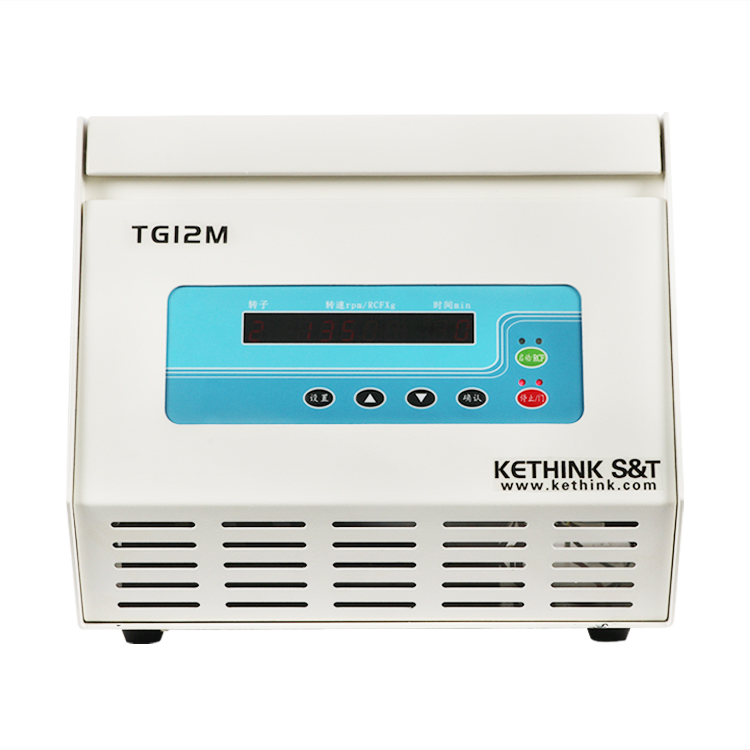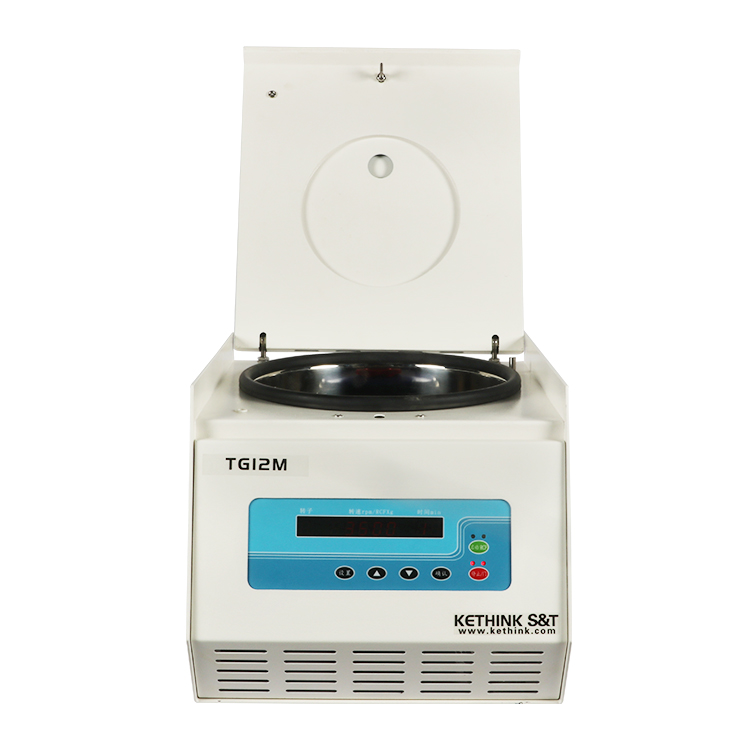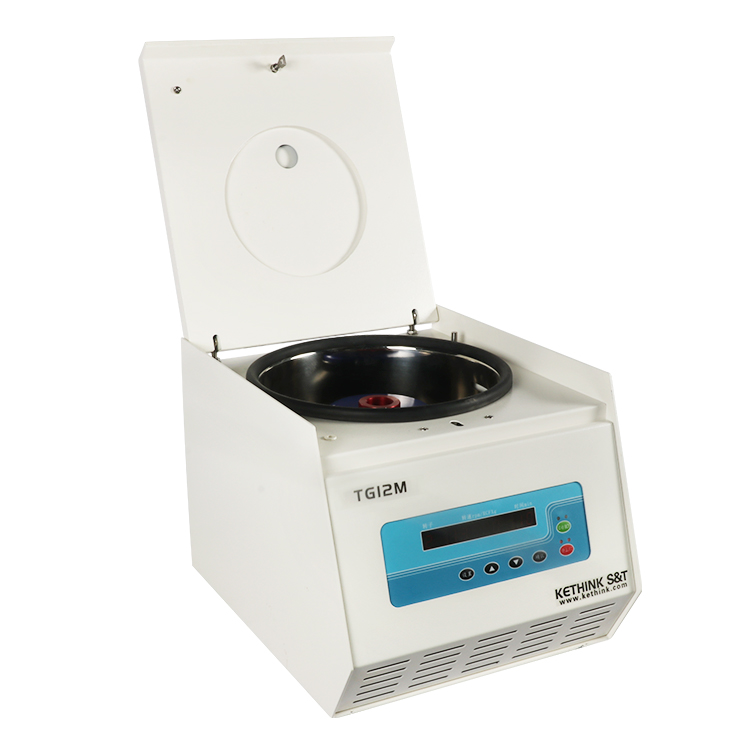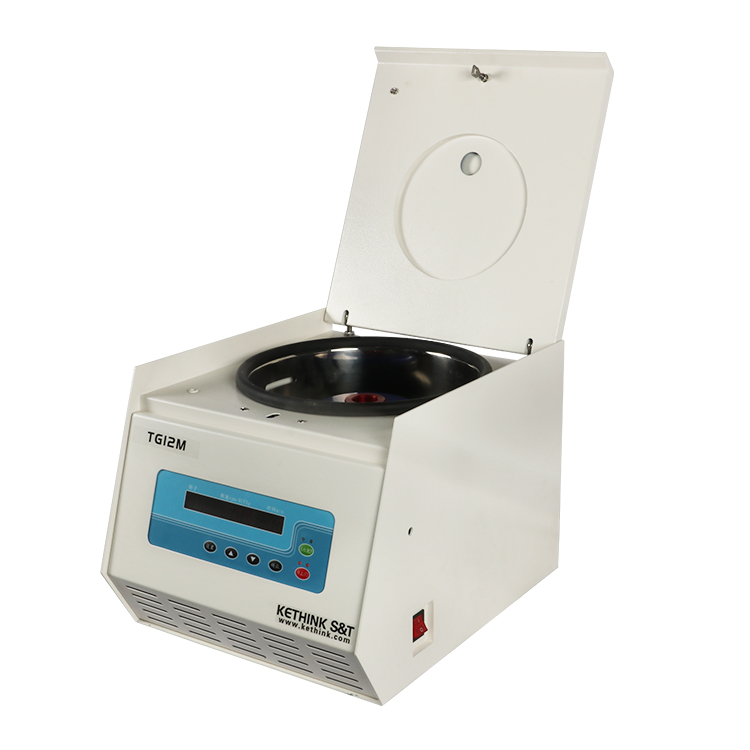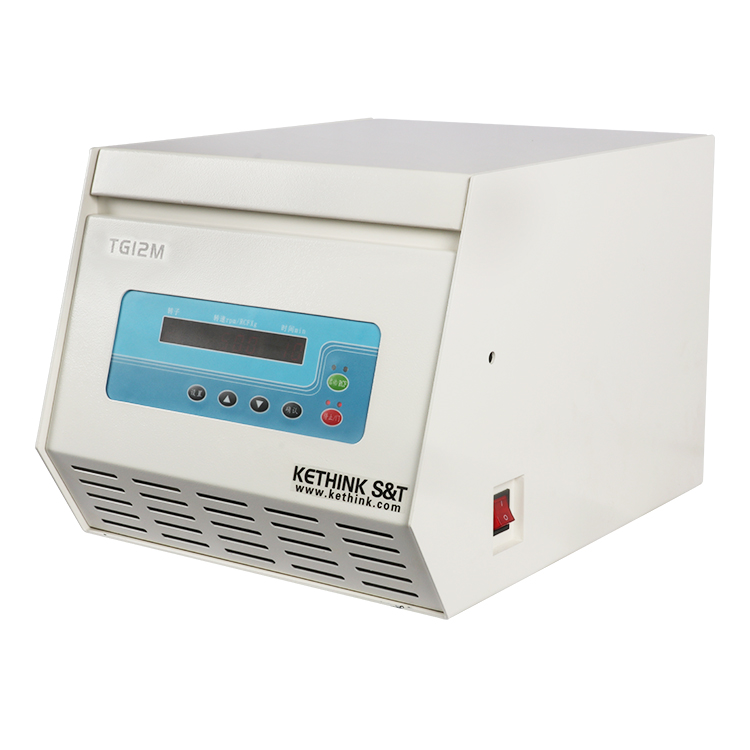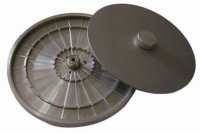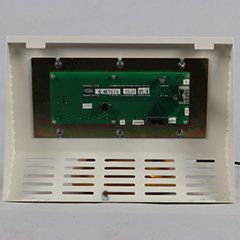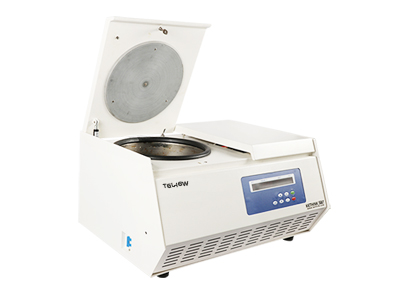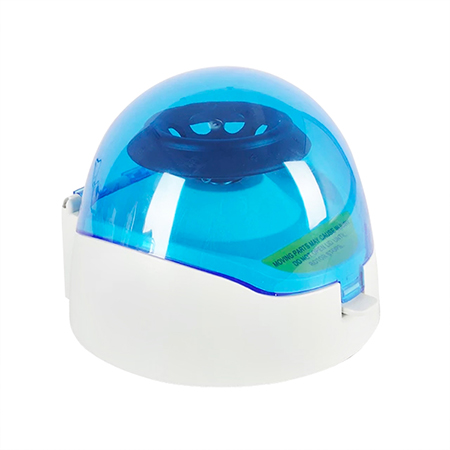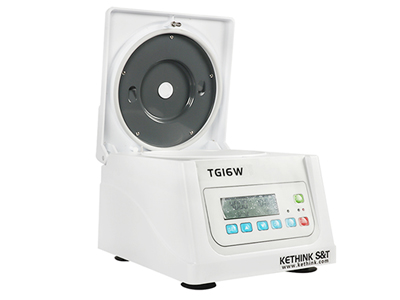Micro hematocrit centrifuge, blood centrifuge
- Model NO: KT-TG12M(LED)
- Max Speed: 12000rpm
- Max RCF: 13960×g
- Max Capacity: 24pcs capillaries
- Timer Range: 0 ~ 99min59s
- Motor: DC brushless motor
- Power: 400W 220V 50Hz 10A
- Noise: ≤52dB(A)
- Dimensions: 450 *360 * 325 mm(L*W*H)
- Net Weight: 20kg
Description
Capillary tube centrifuges are also called micro hematocrit centrifuges/hematology centrifuges, which are used in hospital labs for hematocrit determination. Hematocrit measurement (also call PCV) refers to the percentage of red blood cells in a whole blood sample that is compressed by centrifugal precipitation under certain conditions. There are many methods for determination, and Wintrobe is still a commonly used method in clinical practice.
KT-TG12M is a centrifuge specially designed for hematocrit determination. The special rotor has a maximum capacity of 24 capillary blood centrifuges at a time, and the maximum speed is 12000rpm. This centrifuge can also be used for other lab operations with different rotors.
Feature
- Each capillary tube is supported by a fixture tray, which can accommodate any glass fragments and leakage caused by the breakage of the test tube, ensuring that the centrifuge is free from damage. (The following figure 1)
- Sturdy steel shell, compact design save laboratory space.(The following figure 2)
- Unbalance detection, automatic circuit breaker protection function.
- Safe internal lock function, automatic brake system quickly slow down/speed up.
- Electric driven, handle 24 tubes at one time helps to improve working efficiency.
- The magnetic suspension bearing is used to fix the rotor, the magnetic field is used to keep the rotor in the center of the stator coil.
figure 1
figure 2
Rotors
| No | Item | Max speed(r/min) | Max RCF(×g) | Volume(ml) | Tube size(mm) |
| NO.1 | capillary tube angle rotor | 12000 r/min | 13960xg | 24pcs | Φ4*100 |
Application
The measurement principle of hematocrit measurement
Inject quantitative anticoagulated blood into Wen’s specific product tube and centrifuge at a certain speed and time to obtain the ratio of deposited red blood cells to plasma, thereby knowing the ratio of the volume of red blood cells per liter (L/L).
Hematocrit measurement is a simple method that indirectly reflects the number, size, and volume of red blood cells. Combining red blood cell count and hemoglobin content, the average value of red blood cells can be calculated, which is helpful for clinical blood analysis and diagnosis. Such as diagnosis of anemia, hemoconcentration caused by various reasons, cytosis, and it is also an indicator of clinical blood transfusion and fluid transfusion efficacy observation.
The function of the hematocrit centrifuge
It is mainly used to determine the hematocrit value in the blood, and can also be used for the separation of other micro-volume solutions.
How do you make hematocrit? How do you calculate the hematocrit after you centrifuge?
- Draw 2ml of venous blood, inject it into an anticoagulation tube and mix it immediately.
- Use a slender capillary dropper to suck the mixed anticoagulant blood, insert it into the bottom of Wen’s tube, and then slowly inject the blood to the 10th mark to avoid bubbles.
- Centrifuge at 50 revolutions per second (3000r/min) for 30 minutes in KT-TG12M centrifuge, and read the column height of the red blood cell layer.
- The blood after centrifugation is divided into five layers:
①The plasma layer is the upper Z layer.
②The platelet layer is the white chylo layer.
③The white blood cells and nucleated red blood cell layer (nucleated cell layer) are grayish red.
④Reduced red blood cell layer, a circle of the purple-black red blood cell layer, is caused by the reduction of oxygenated hemoglobin by white blood cell metabolism.
⑤ Oxygenated red blood cell layer, bright red in the bottom layer.
- Read the column height of the red blood cell layer (based on the surface of the red blood cell layer) in millimeters, multiply by 0.01, that is, the number of liters of red blood cell volume per liter of blood, and report the result in L/L.
Related Product
Refrigerated Micro Centrifuge
Mini Microcentrifuge
Benchtop Microcentrifuge
Q&A
Finally
Explore our selection of centrifuges or submit a custom quote request for the perfect centrifuge for your needs. For more information about custom and standard centrifuge from KETHINK, please contact us..

